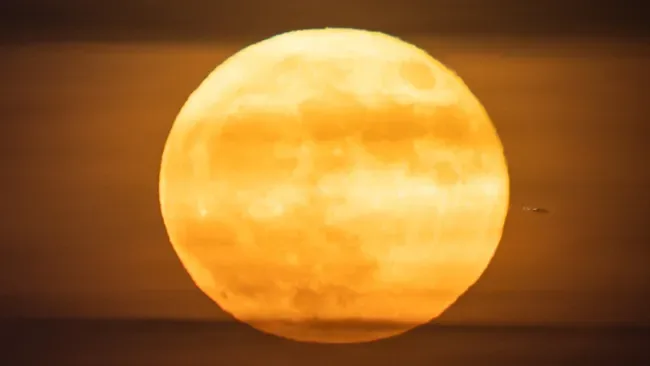June's Stunning 'Strawberry Moon' Will Light Up the Sky Next Week – How to Watch

On June 11, the whole "Strawberry Moon" will be visible in the night sky, putting on a dazzling spectacle when the fully-lit disk of Earth's natural satellite passes low over the southeastern horizon.
What is a whole 'Strawberry Moon'?
A full moon happens every month when the moon is opposite the sun in the Earth's sky, allowing the lunar disk to be fully illuminated from our perspective. The full moon in June is popularly referred to as the "Strawberry Moon" in America, but the nickname is not related to its colour.
The evocative term is said to have been coined by Native American Algonquian tribes to describe the brief strawberry harvesting season that occurs around this time of year, according to the Old Farmer's Almanack. Other civilizations have given the event many names, including Blooming Moon, Green Corn Moon, Birth Moon, and Hatching Moon.
Whatever you call it, one thing is sure: June's full moon will put on a spectacular show when it illuminates the night sky next week.
When and where will the Strawberry Moon rise?
For observers in New York, this month's full moon will occur around 3:44 a.m. EDT (0744 GMT) on June 11. The actual timing of the event will vary depending on your location on Earth, so consult a reputable website like TimeandDate.com for details about your area.
The lunar disk will look illuminated entirely to stargazers across America when it rises over the southeastern horizon at sunset on June 10, providing the best opportunity for the astrophotography community to picture the Strawberry Moon close to the horizon.
The Earth's natural satellite will appear especially enormous to the naked eye at moonrise due to the little-known "moon illusion," a peculiar phenomenon in which the human brain convinces us that objects are larger than they are when close to the horizon.
Because of its proximity to the summer solstice, the time of year when the sun is at its brightest, the full moon in June follows a predictable path across the spring sky every year. This year's Strawberry Moon will be the weakest in decades, according to stargazing website Earthsky.org, due in part to phenomena in which the sun's gravitational pull tugs around the moon's tilted orbit.